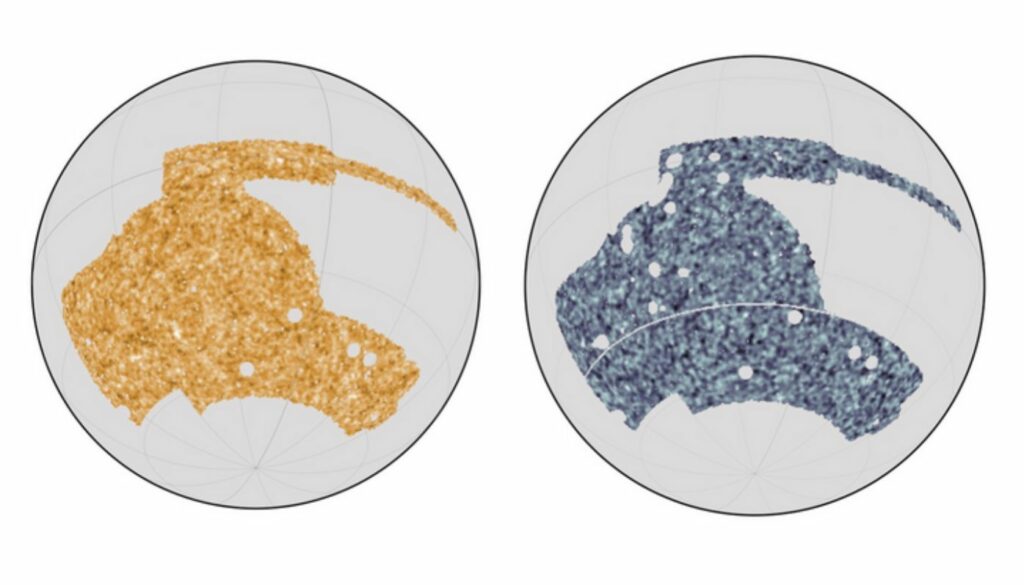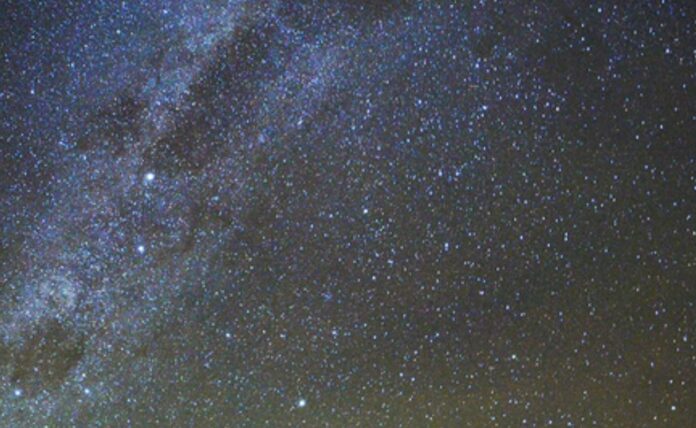The universe started with matter being expelled and eventually forming the planets, stars, and galaxies we know now. Scientists can comprehend the forces that influenced the universe’s evolution by meticulously piecing together a map of that matter’s current state.
Scientists from the University of Chicago and Fermi National Accelerator Laboratory among others have unveiled one of the most accurate measurements of the current distribution of matter in the universe.
The analysis, involving over 150 researchers, used data from the Dark Energy Survey and South Pole Telescope’s two major universe telescope surveys and was published in Physical Review D as a trio of articles today.
The analysis finds, among other things, that matter is less “clumpy” than what our best current universe model predicts, adding to evidence of a missing component in our standard universe model.
Cooling, clumping
About 13 billion years ago, the Big Bang created all the matter in the universe in a short amount of time that was very hot and intense. Since then, this matter has been moving away from the center of the universe, cooling and clumping as it goes.
Scientists are interested in discovering the ultimate resting place of all this matter because it will help them to better understand the events that occurred and the forces that must have been at work.
The first step is to use telescopes to gather a huge amount of information.
The South Pole Telescope, which searches for the weak remnants of radiation that are still moving across the sky from the very early moments of the cosmos, and the Dark Energy Survey, which examined the sky over six years from a hilltop in Chile, were integrated in this work.
When two observational techniques are used, there is less of a possibility that the findings may be skewed by an error in one of the approaches.
“It functions like a cross-check, so it becomes a much more robust measurement than if you just used one or the other,” remarks lead author Chihway Chang.
The investigation examined a phenomenon known as gravitational lensing in both cases. As light traverses the cosmos, it may experience modest bending as it passes by galaxies and other objects with strong gravitational pull.
Since both ordinary and dark matter exert gravity, this approach detects both.
By meticulously studying these two sets of data, the scientists were able to deduce where all of the stuff in the cosmos had ended up. It is more exact than prior measurements, which means it narrows down the options for where this stuff ended up, according to the authors.
Most of the results fit perfectly with the best theory of the universe that is currently thought to be true.
However, there are also indications of a crack, which has also previously been revealed by other research.
According to research coauthor and University of Hawaii astronomer Eric Baxter: “It seems like there are slightly less fluctuations in the current universe than we would predict assuming our standard cosmological model anchored to the early universe.”
In other words, if you create a model that incorporates all the generally recognized physical principles, then take measurements from the beginning of the universe and project them forward in time, the findings deviate significantly from what we actually observe today.
In particular, today’s readings show that the universe is less “clumpy” than the model would predict. This means that things are not evenly spread out, but are more concentrated in some places.
Scientists say that if more studies find the same results, it could mean that our current model of the universe is missing something. However, the results are not yet at the statistical level that scientists consider to be rock solid. That needs more research.
But the analysis is a big deal because it used data from two very different telescope surveys to find useful information. As additional huge telescopes come online in the next decades, this is a much-anticipated astrophysics plan, although few have been implemented yet.

“I think this exercise showed both the challenges and benefits of doing these kinds of analyses,” Chang adds. “There’s a lot of new things you can do when you combine these different angles of looking at the universe.”
Image Credit: Andreas Papadopoulos
